What is Dyslexia?
Dyslexia is a term many of us have heard and we associate it with people who struggle with reading and writing or confuse b and d but few people know much about this neurological condition which affects 10-15% of the UK population.
Dyslexia, sometimes termed word blindness, has been documented for over 100 years. The first recorded case of dyslexia appeared in the British medical journal in 1896. W. Pringle Morgan, described the case of 14-year-old, Percy F, who could not read and wrote his name as Precy, but he could multiply 749 by 887 quickly and correctly.
 There have been many famous dyslexics such as Richard Branson, Albert Einstein, Walt Disney and Agatha Christie to name a few.
There have been many famous dyslexics such as Richard Branson, Albert Einstein, Walt Disney and Agatha Christie to name a few.
Dyslexics tend to be very creative and often Entrepreneurial.
The British Dyslexic Association defines dyslexia as:
“Dyslexia is a specific learning difficulty which mainly affects the development of literacy and language related skills. It is likely to be present at birth and to be lifelong in its effects. It is characterised by difficulties with phonological processing, rapid naming, working memory, processing speed, and the automatic development of skills that may not match up to an individual’s other cognitive abilities”.
In a modern world, where reading, writing and maths are given high status and employment opportunities depend on mastery of these skills parents can become worried when their child is not achieving in line with their peer group.
What should parents look out for?
- Delayed speech
- Difficulties in converting speech sounds (phonemes) into written text (graphemes), resulting in their reading and writing being below that expected for their IQ.
- Confusion over the letters b and d after the age of 8
- Difficulty in recalling times tables or sequences such as days of the week and months of the year.
- Poor organisational skills
- difficulty copying text which is increased when copying from a board
- Slow reading speed
- Poor sight words
- Adding in/missing out letters when reading or spelling
- Guessing words
- Reversal of words when reading or spelling (on/no, was/saw)
- Difficulty mastering new skills
- Difficulty transferring thoughts to paper
This is not an exhaustive list but good signs to watch out for.
Research into Dyslexia
There has been much research into the causes of dyslexia and this is still ongoing. It is believed that dyslexia is caused by an hereditary gene (although this is not always the case). A dyslexic’s brain works differently to a non-dyslexics and there is less activity in the language areas of the brain during reading and writing.
If you are concerned about your child what can you do?
1) Talk to your child’s class teacher, Special Educational Needs Teacher (SENCO)
2) Request a dyslexia screening test, especially if there is a family history of these difficulties
3) Follow a systematic multi-sensory programme such as Alpha to Omega or Toe by toe
4) Find a qualified specialist to assist
Teaching Methods
A dyslexic student will need a multi-sensory approach to learning reading and spelling. This will need to be very structured in filling in the phonic gaps.
Multi-sensory
Seeing, hearing, saying, writing, feeling/ making. The student will need to engage as many senses as possible in order to stimulate the language areas of the brain.
Handwriting
It is beneficial for the dyslexic to join their handwriting as this helps them to remember the word shape.
Using the sense of touch
The use of sandpaper letters with a blindfold (removing the sense of sight heightens the sense of touch), play dough, sand, drawing in the air/ on the child’s back will increase the number of senses a child uses, stimulating the language areas of the brain.
How Can We help at Kip McGrath?
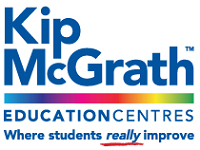 Kip McGrath has over 40 years experience of helping children across the globe do better at school. The very core of the Kip McGrath programme uses a systematic multi-sensory approach to learning (seeing, hearing, saying and writing). This approach has been proven to be most effective for dyslexic students.
Kip McGrath has over 40 years experience of helping children across the globe do better at school. The very core of the Kip McGrath programme uses a systematic multi-sensory approach to learning (seeing, hearing, saying and writing). This approach has been proven to be most effective for dyslexic students.
The Kip software was also designed on a blue background. Dyslexic students often struggle to read on white. Many such students read better with a coloured overlay or coloured lenses. Testing to see if this will help your child can be carried out at an optometrist. At home on the computer try changing the background colour or font colour. Writing on coloured paper can also help. Kip McGrath developed some new programmes in 2008 which develop visual and auditory memory and these are also valuable to the dyslexic student.
If your child has been diagnosed as dyslexic, you may wish to consider extra tuition. Talk to your local Kip Centre teacher to see if they can help. Many centres have teachers experienced in Special Needs Education. To find a centre near you, please click on the links below:
Find a Kip McGrath Centre in Scotland >>
Find a Kip McGrath Centre in England, Wales or Ireland >>
What else can I try?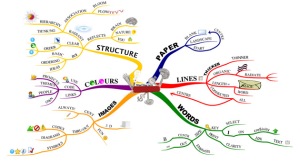
Magnetic letters for creating words
Mind mapping by Tony Buzan
Recap and Review work frequently
Subtitles on the TV, audio books
A Neuro-Science Solution
Introducing Cellfield
For some children a more intense solution is needed. When the traditional approach fails and a student hits a brick wall a more drastic solution is required. As dyslexics under use certain parts of their brain and overuse others (compared to a non-dyslexic reader).
it may be necessary to use neuro-science research (which shows that the brain can change itself) to treat the underlying cause. Cellfield is an innovative, proven, sustainable treatment for dyslexia and is available in the UK. Cellfield takes a multi-disciplinary approach, building on neuro-science research to stimulate the auditory and visual parts of the brain and make the messaging between these areas more precise.
 Cellfield achieves remarkable gains, on average a child will make 2 years on phonics and 1 year on comprehension after only 2 weeks treatment. These gains are sustained and increased over 6 months. Cellfield has assisted with reading accuracy, reading fluency, spelling, memory and maths skills as well as an increase in self esteem.
Cellfield achieves remarkable gains, on average a child will make 2 years on phonics and 1 year on comprehension after only 2 weeks treatment. These gains are sustained and increased over 6 months. Cellfield has assisted with reading accuracy, reading fluency, spelling, memory and maths skills as well as an increase in self esteem.
For more information visit www.cellfielduk.com
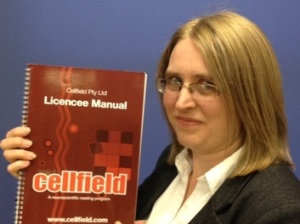 This blog article was written for us by Clare Powell who is the Centre Director at Kip McGrath Scunthorpe and also Cellfield Reading Matters South Yorkshire. Clare holds a Bachelor of Education degree and is an experienced School teacher who has worked with students at Primary, Secondary, GCSE, A level and Degree level and has seen these students make considerable progress.
This blog article was written for us by Clare Powell who is the Centre Director at Kip McGrath Scunthorpe and also Cellfield Reading Matters South Yorkshire. Clare holds a Bachelor of Education degree and is an experienced School teacher who has worked with students at Primary, Secondary, GCSE, A level and Degree level and has seen these students make considerable progress.

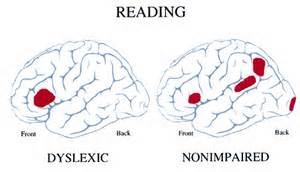
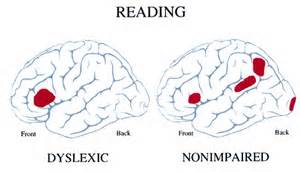
Reblogged this on Kip McGrath Education Centres ~ Sevenoaks and commented:
Dyslexia advice by my Kip McGrath colleagues.
Reblogged this on Kip McGrath Loughborough and commented:
A superb read about dyslexia.
Reblogged this on Kip McGrath Education Centre Mallorca and commented:
This is a very interesting article. A good insight for parents. At Kip Mallorca we now have a wonderful tutor who is trained in supporting leanring needs and dyslexia. If you want further support or advice call 971 791 410,
My great grandfather, grandfather, father and brother are dyslectic,
This book is a,must have for parents of a dyslectic child.
If is a books written by Roald to benefit the Dyslectic institute.
Just a new way of looking at life…….
A fun little book. Definitely one for your school.
Melinda
The Vicar of Nibbleswicke
Roald Dahl
Baker & Taylor, CATS, Jul 10, 2009
52 Reviews
The new vicar of Nibbleswicke possesses a speech impediment that leads to holy hysteria in an otherwise quiet country parish. Reprint.
What people are saying – Write a review
User ratings
5 stars
25
4 stars
13
3 stars
13
2 stars
1
1 star
0
Review: The Vicar of Nibbleswicke
User Review – Goodreads
“The Vicar of Nibbleswicke” Review In this story, there is now a new Vicar of Nibbleswicke and his name is Reverend Robert Lee. The only problem is that he is suffering from a very rare condition that …
Review: The Vicar of Nibbleswicke
User Review – Goodreads
Given that this book was written by Roald Dahl to benefit the Dyslexia Institute, and given how it starts out, I was a little dubious about it. I should have known better. It quickly turns into a …
All 20 reviews »
About the author (2009)
Roald (pronounced “Roo-aal”) was born in Llandaff, South Wales. He had a relatively uneventful childhood and was educated at Repton School. During World War II he served as a fighter pilot and for a time was stationed in Washington, D.C.. Prompted by an interviewer, he turned an account of one of his war experiences into a short story that was accepted by the Saturday Evening Post, which were eventually collected in Over to You (1946). Dahl’s stories are often described as horror tales or fantasies, but neither description does them justice. He has the ability to treat the horrible and ghastly with a light touch, sometimes even with a humorous one. His tales never become merely shocking or gruesome. His purpose is not to shock but to entertain, and much of the entertainment comes from the unusual twists in his plots, rather than from grizzly details. Dahl has also become famous as a writer of children’s stories. In some circles, these works have cased great controversy. Critics have charged that Dahl’s work is anti-Semitic and degrades women. Nevertheless, his work continues to be read: Charlie and Chocolate Factory (1964) was made into a successful movie, and his books of rhymes for children continue to be very popular.
Award-winning illustrator and children’s author, Quentin Blake was born in 1932. His first drawings were published in “Punch” when he was 16. He has illustrated almost 300 titles some in collaboration with famous writers such as Russell Hoban, John Yeoman and Roald Dahl. He is the creator of characters such as Mister Magnolia and Mrs. Armitage. His works have earned him numerous awards including the Whitbread Award, the Kate Greenaway Medal, the Emil/Kurt Maschler Award, the Bologna Ragazzi Prize, and in 2002 the Hans Christian Andersen Award for Illustration. In 1999, he was selected as the First Children’s Laureate.